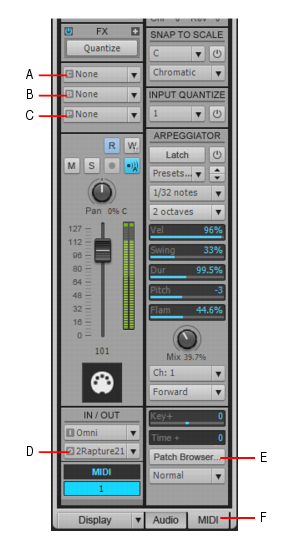Electronic keyboards and synthesizers often contain hundreds or thousands of different sounds. Each sound is known as a patch. The name comes from the early days of synthesizers, for which you physically rewired (using patch cords) the oscillators and modulators to produce different sounds. Patches are normally organized into groups of 128, called banks. Most instruments have between 1 and 8 banks, but MIDI supports up to 16,384 banks of 128 patches each (that’s over 2 million patches).The Bank and Patch controls in the Console view and Track Inspector control the initial bank and patch of a track during playback. Every time SONAR starts playback at the beginning of a project, the bank and patch settings for the track are set to these initial values. Many instruments have descriptive names for their banks and patches. SONAR stores these names in an instrument definition. If you are using an instrument that supports General MIDI, your patch list will contain the 128 sounds that are defined by the General MIDI specification.



Tip - Searching Documentation
Tip: To search for a specific topic, type your search query in the Search Cakewalk.com field at the top right of this page.
When the search results appear, click which product's documentation you would like to search to filter the search results further.
Note - Using Offline Help
Note: If you prefer to always use offline Help, go to Edit > Preferences > File > Advanced in your Cakewalk software and select Always Use Offline Help.
If you are not connected to the internet, your Cakewalk software will default to showing offline help until an internet connection becomes available.




